How to Measure with AR on iPhone
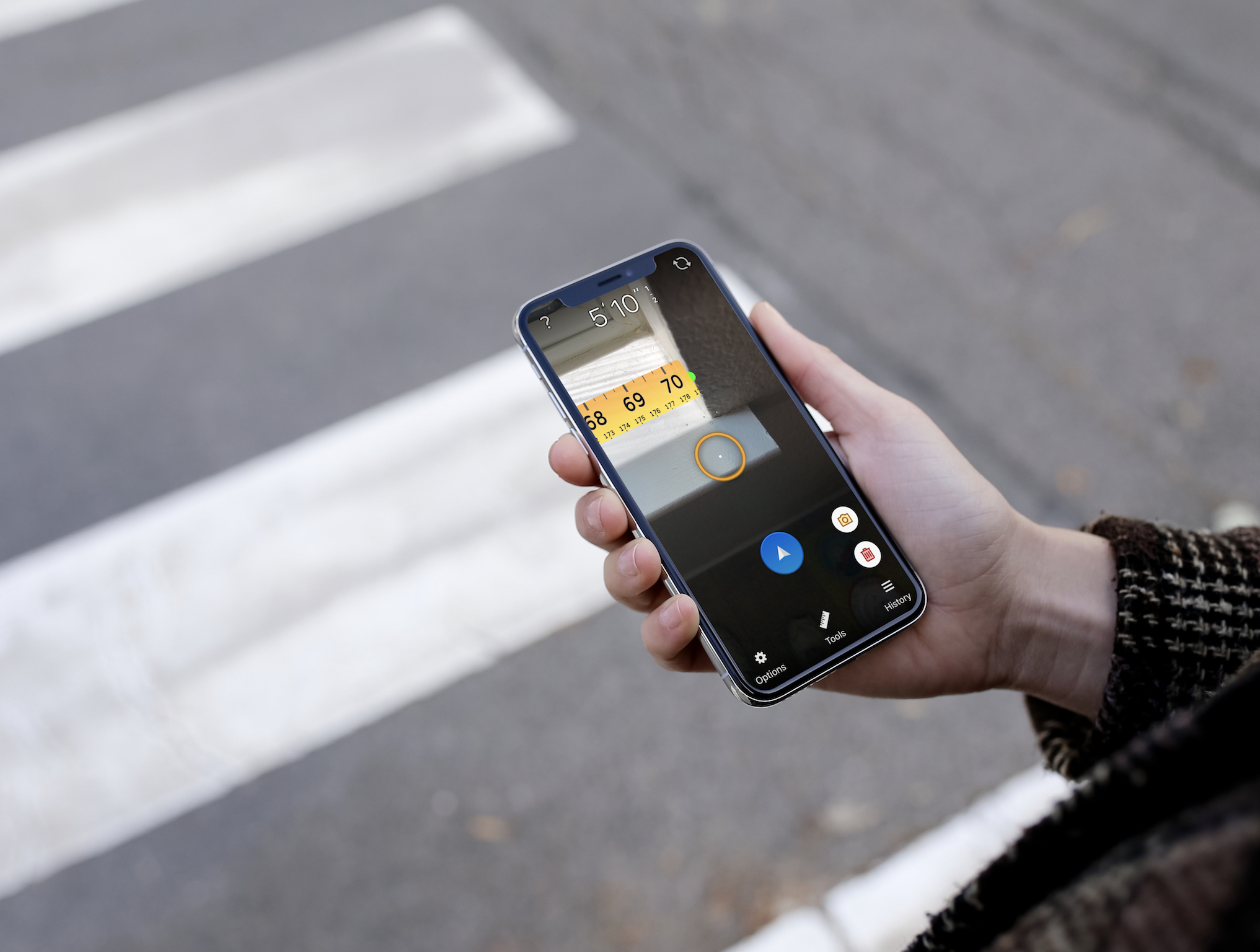
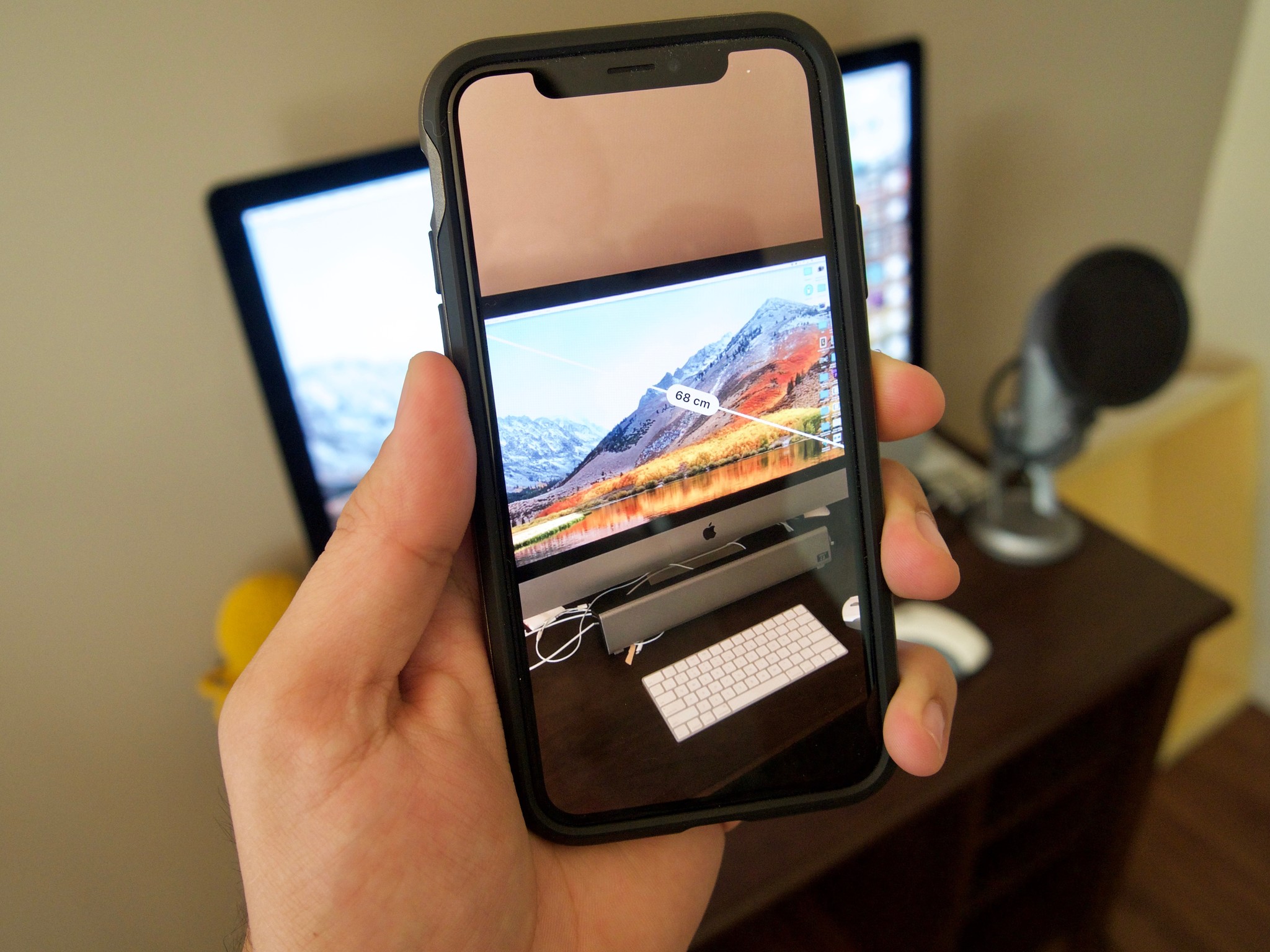
Our two kitchen windows needed some new blinds. So naturally, I got out my iPhone.
If that seems like a non-sequitur to you, remember that Apple is all-in on augmented reality (or AR, as we say in the biz). So we took this opportunity to play around with a few third-party AR measuring apps, as well as Apple's new Measure app, released on Sept. 17 as a part of iOS 12.
If you've ever had to measure a window for blinds, you know that wrangling a tape measure can be a two-person job, so one person holding an iPhone to make measurements has some distinct appeal. Accurate measurements are critical, though, particularly for inside mounted blinds.
A trip to the App Store revealed plenty of third-party apps to choose from. So I downloaded eight of them (your guess is as good as mine as to how many AR rulers and tape measures exist on the App Store) and took them for a spin, seeking answers to the following questions:
- How easy is the app to use?
- How accurate is the app compared to actual measurements taken with a metal tape measure?
I discarded two of the apps either because they just didn't seem to work or required an in-app purchase to reveal the measurement results.
I didn't try to be overly scientific, such as measuring each dimension three times and taking an average, though I did stand-in the same location when making the measurements with each of the apps. If a measuring result seemed to be not in the ballpark of the actual measurement of the window, I re-measured.
About the Apps
Most of the apps I looked at had various tools beyond the usual length measurement. Some had the ability to create floor plans, measure a person's height, determine face attributes, perform chaining (start a new measurement from the last point), and figure out whether or not something was level.
Master your iPhone in minutes
iMore offers spot-on advice and guidance from our team of experts, with decades of Apple device experience to lean on. Learn more with iMore!
For all these apps, you can choose your preferred unit of measurement (metric/imperial). The mechanics of doing simple length measurements with these apps are all pretty much the same. After the iPhone camera orients itself to its surroundings, the app displays a focus ring typically in the center of the iPhone's screen. Tap the screen to select a starting point, then move the camera to an ending point and tap again.
Just about all of the apps have the ability to save the results and share them with others. This is helpful for those times when you get a call from your spouse who is standing in the middle of the home furnishings section of a store and asking you to measure the size of your couch. The ability to send along a photo with AR measurements overlaid on it is pretty cool.
Measure (Apple)
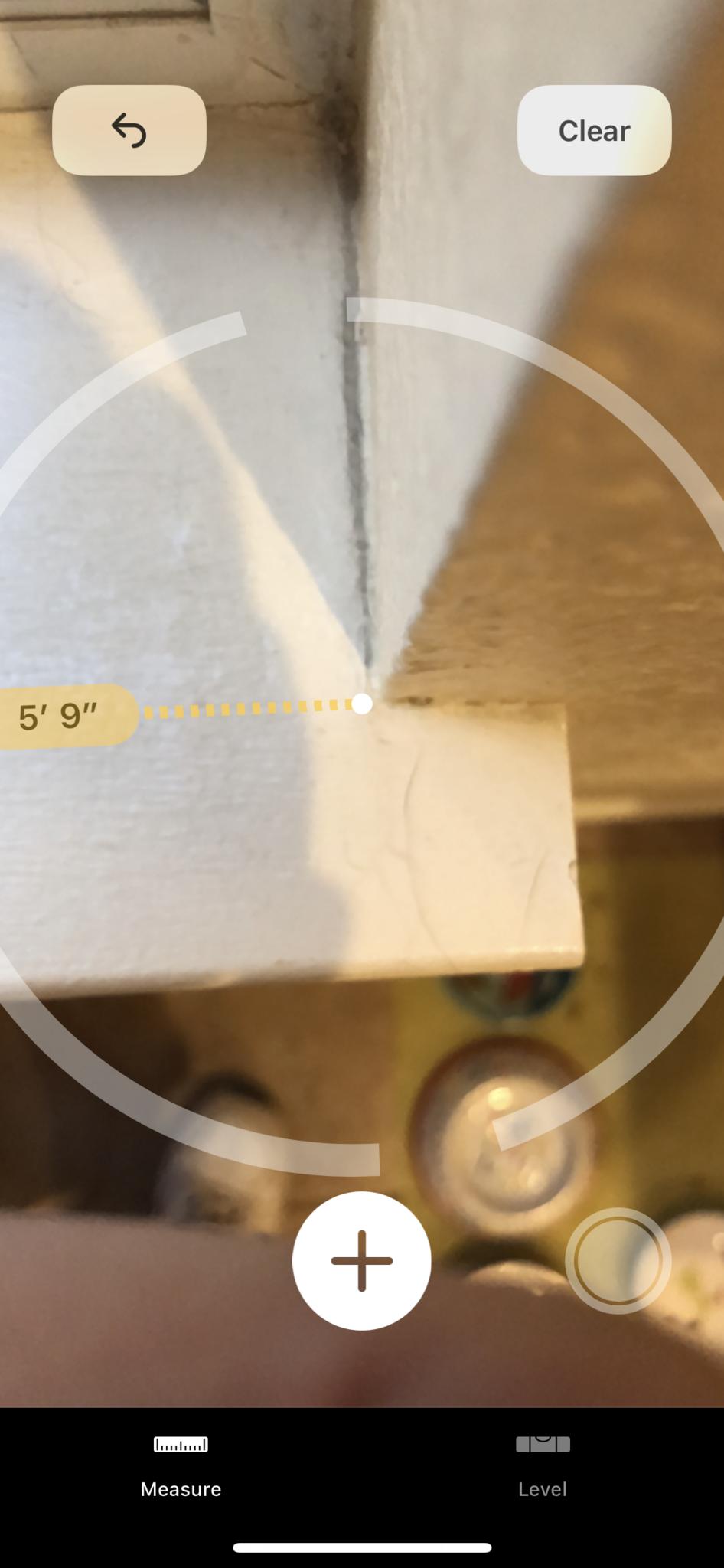
Apple's Measure app probably has the fewest features — and therefore is one of the simplest to use — of any of the apps I tried. The only setting you can fiddle with is switching between imperial and metric measurements. There is a camera button built into the interface, so if the image you're measuring can fit on the screen, it's easy to take a screenshot with the measurements included. Measure will also automatically measure rectangular objects, but the iPhone must be in a horizontal position to do so. So consider this a version 1.1 feature request for automatic measurement of vertical rectangles....like windows.
Apple's Measure app comes built-in with iOS 12.
AirMeasure
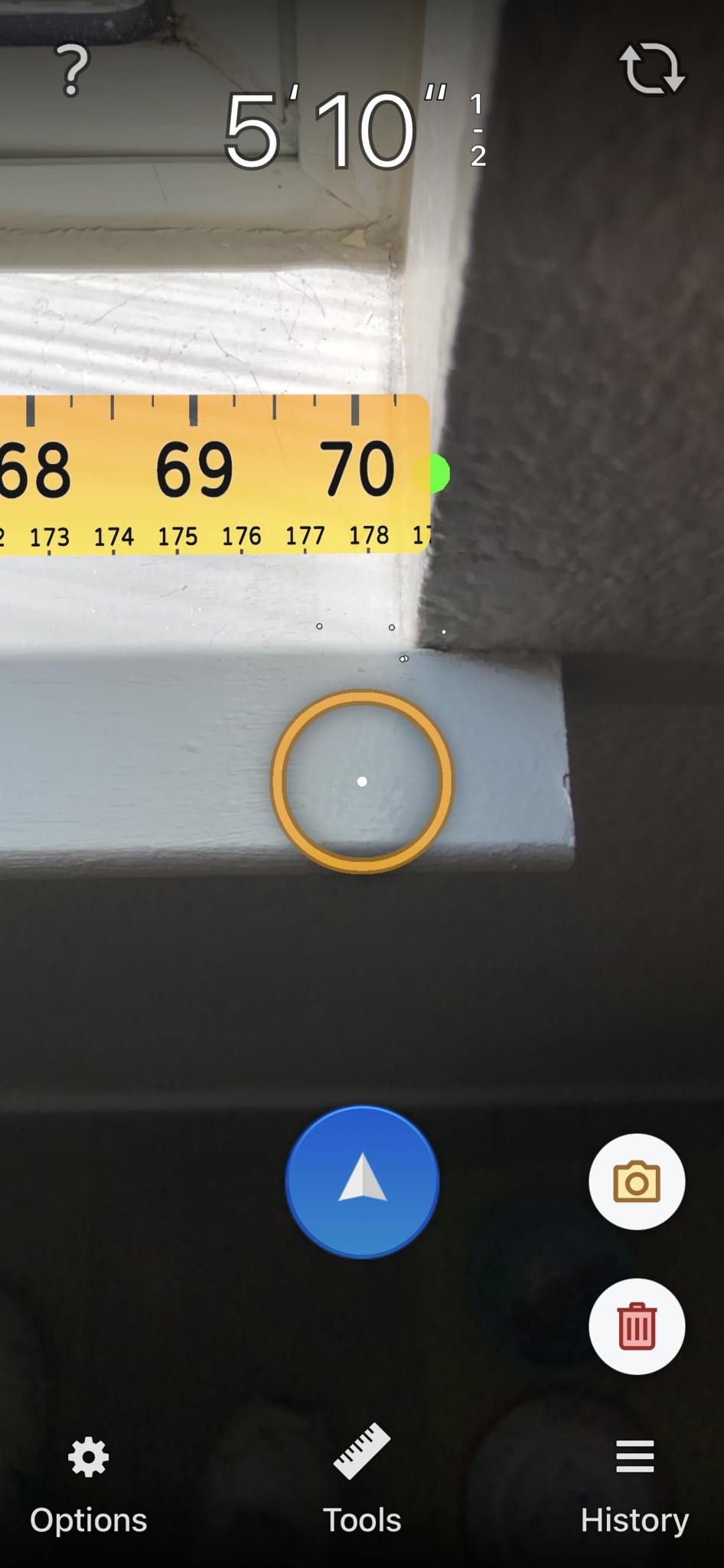
AirMeasure had the greatest number of measuring tools available as well as the ability to activate the iPhone's flash to use as a flashlight. AirMeasure also keeps a history of all the measurements you've taken along with the ability to group them into a project and mark them up. The app includes helpful video tutorials for both overall uses of the app and for each of the individual tools. AirMeasure was very easy to use because the button to tap to mark the starting and ending point of a measurement was located well below the focus ring and within easy reach of a thumb. The virtual tape measure that unspools on the screen as the camera moves is a nice touch.
AR MeasureKit
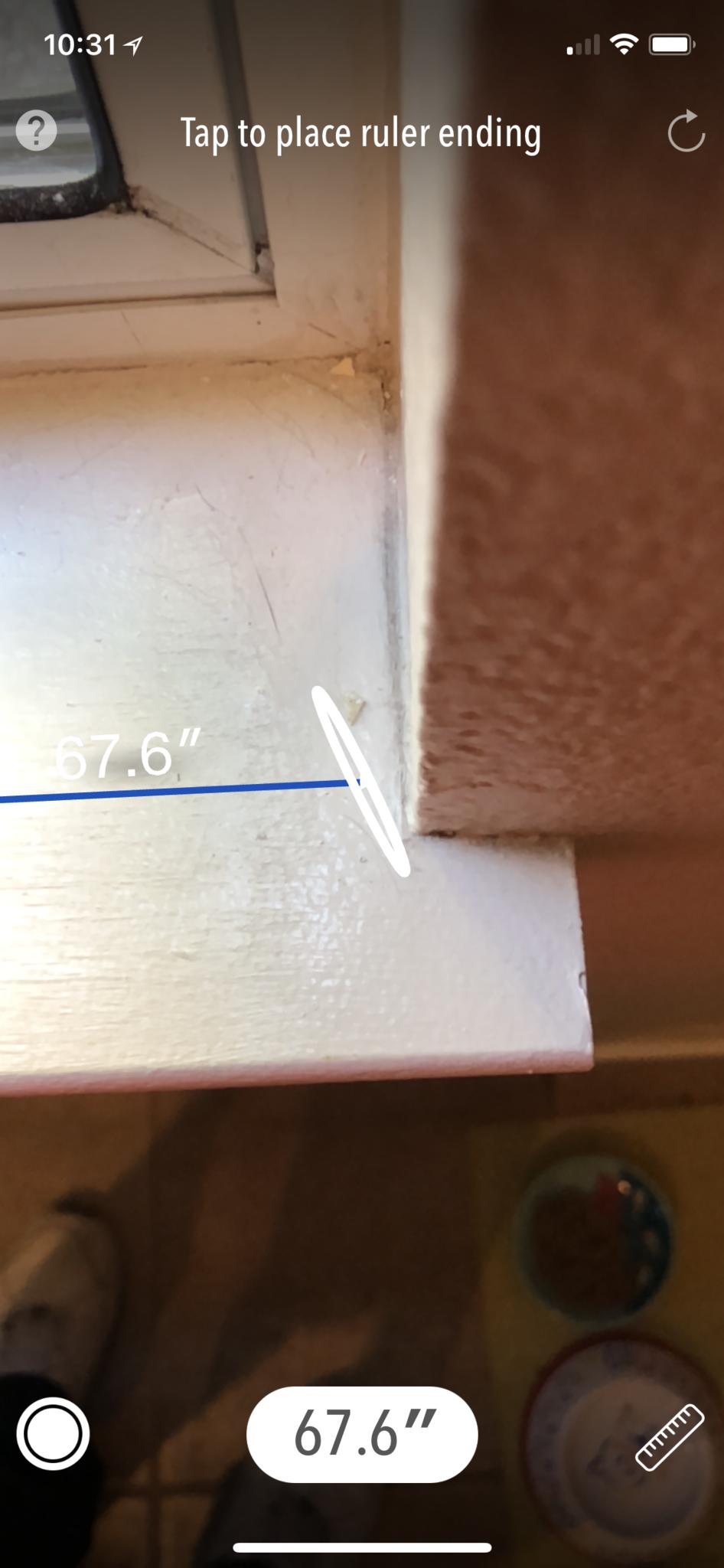
AR MeasureKit has a good selection of tools, including Face Mesh, which creates a wireframe map of your face—sans emoji skin, along with a flashlight. The app provides detailed directions for each tool, but without videos. Making measurements with the ruler tool is difficult because the focus ring is also the button to tap to mark the starting and ending point. Covering the focus ring while tapping leads to a lot of uncertainty about the accuracy of the measurement.
Tape Measure
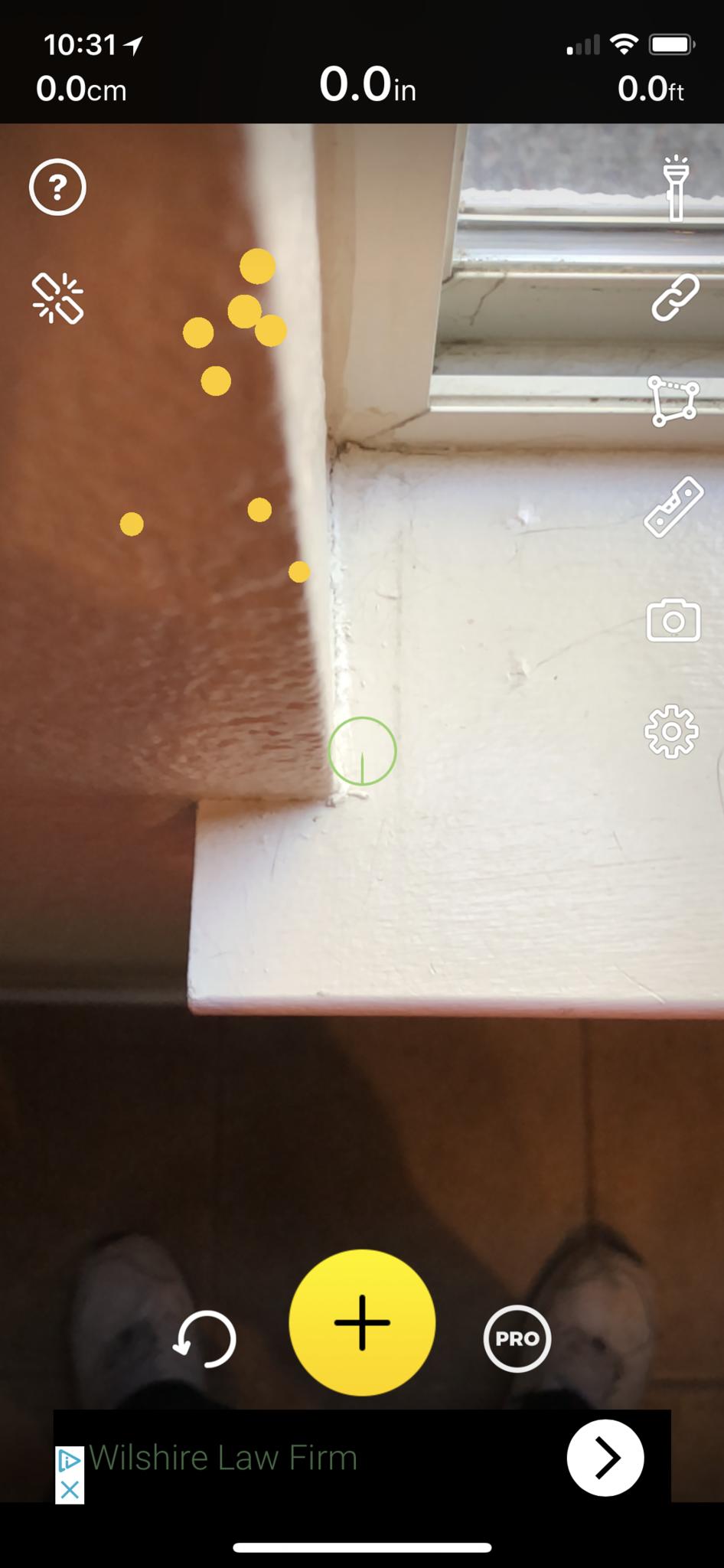
Tape Measure was fairly easy to use but produced fairly inconsistent results. The app provides only the very basic measuring tool for free. All of the app's additional features—including the flashlight, chaining, taking and sharing screenshots, even changing the measuring line color—are pro features that require a $25 annual subscription, but includes a 3-day free trial.
Measured by Lowe's
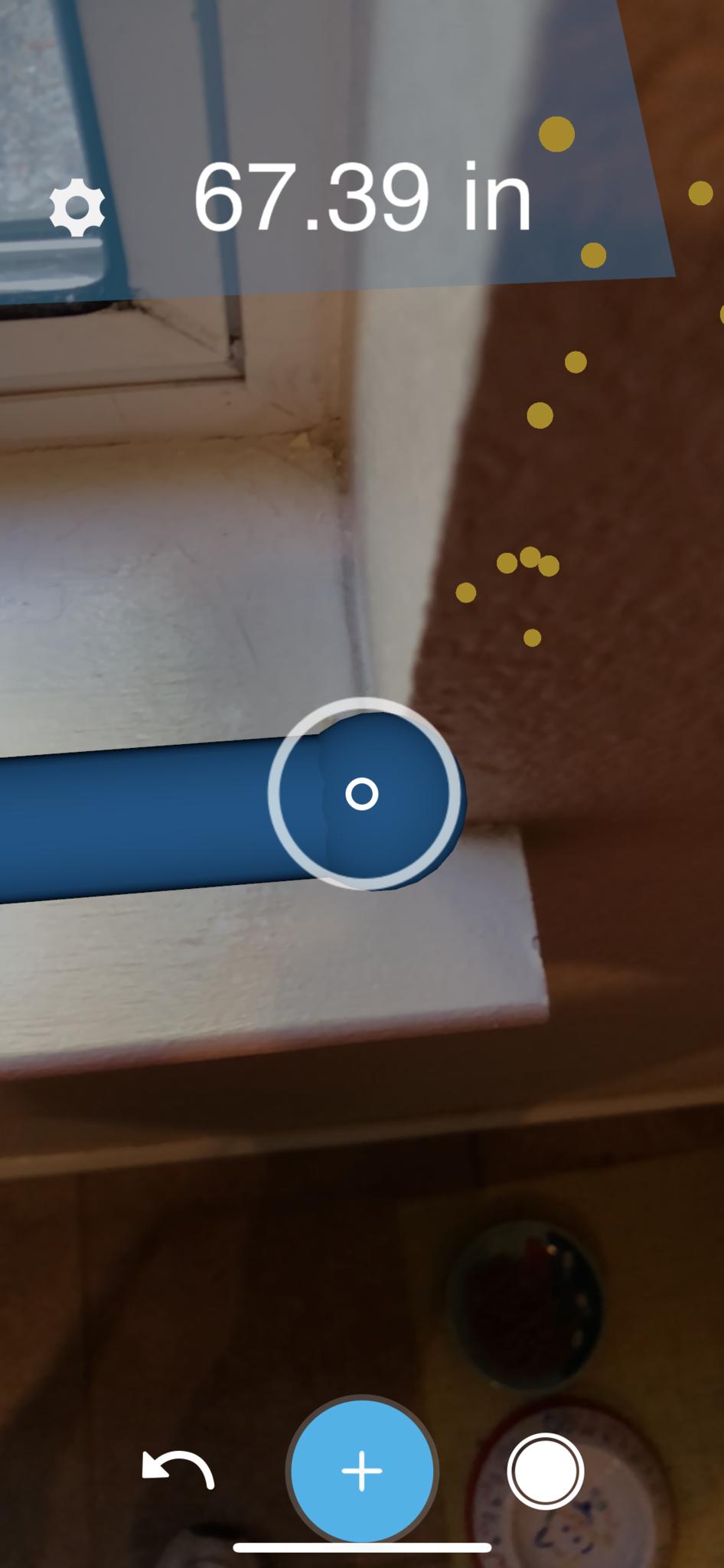
Measured is a simple app that only does very basic measuring, and provides a fairly sparse set of tips for using the app. Interestingly, one of the tips was to perform vertical measurements from the bottom to the top. A nice feature: haptic feedback as you move the camera and draw out the measuring line.
AR Measure
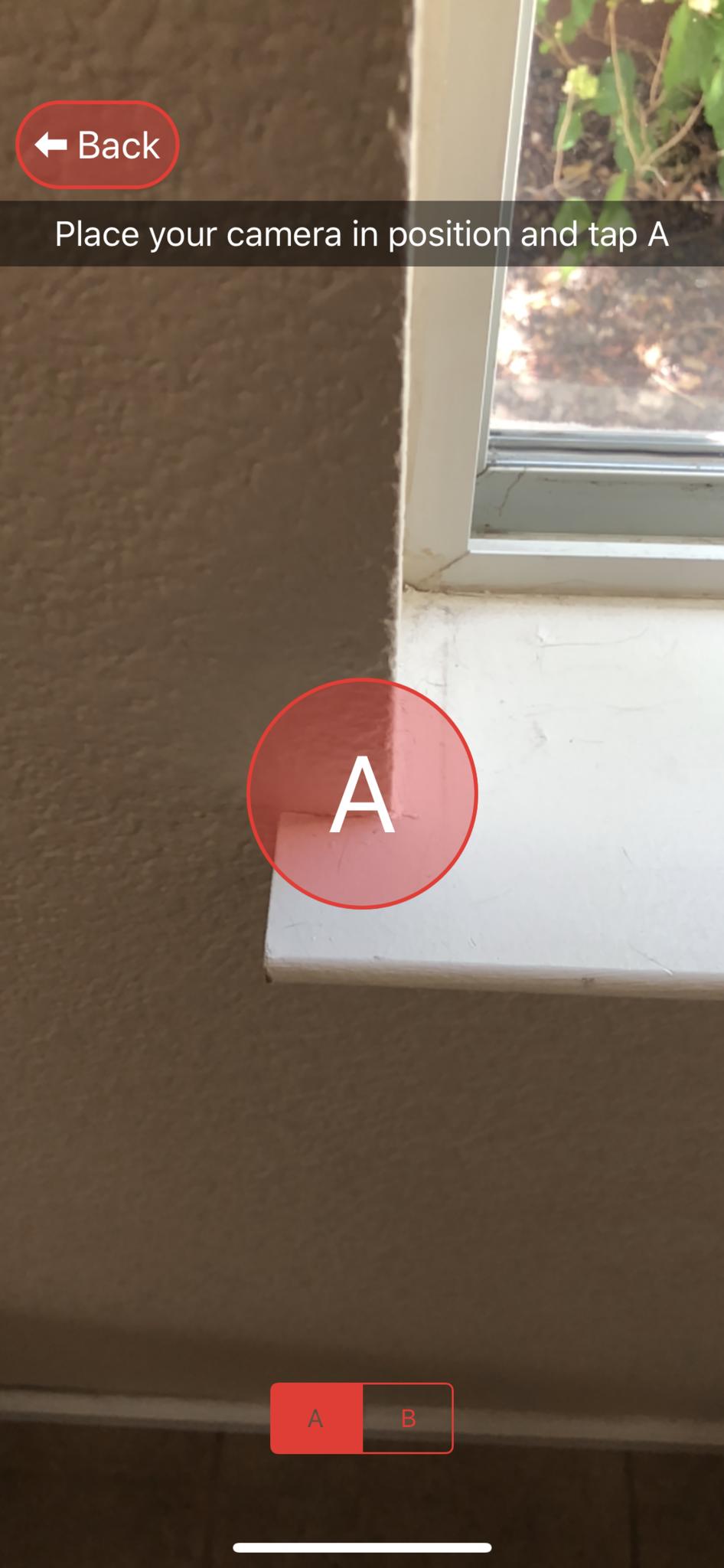
AR Measure offers just a few measuring tools. Interestingly, it offers two ways to perform a basic measurement: A-B Targets [described as "Target points from a distance (Accurate)"] and A-B Markers ["Place your camera at points (Fastest)"]. A-B Targets was easier to use because the focus area was separate from the button to tap to set an A-B point. Curiously, A-B Markers required tapping the focus area to set its A-B points, making it harder to use. The app produced inconsistent results when I used it. [AR Measure Markers]
Measure - ARKit Ruler & Meter
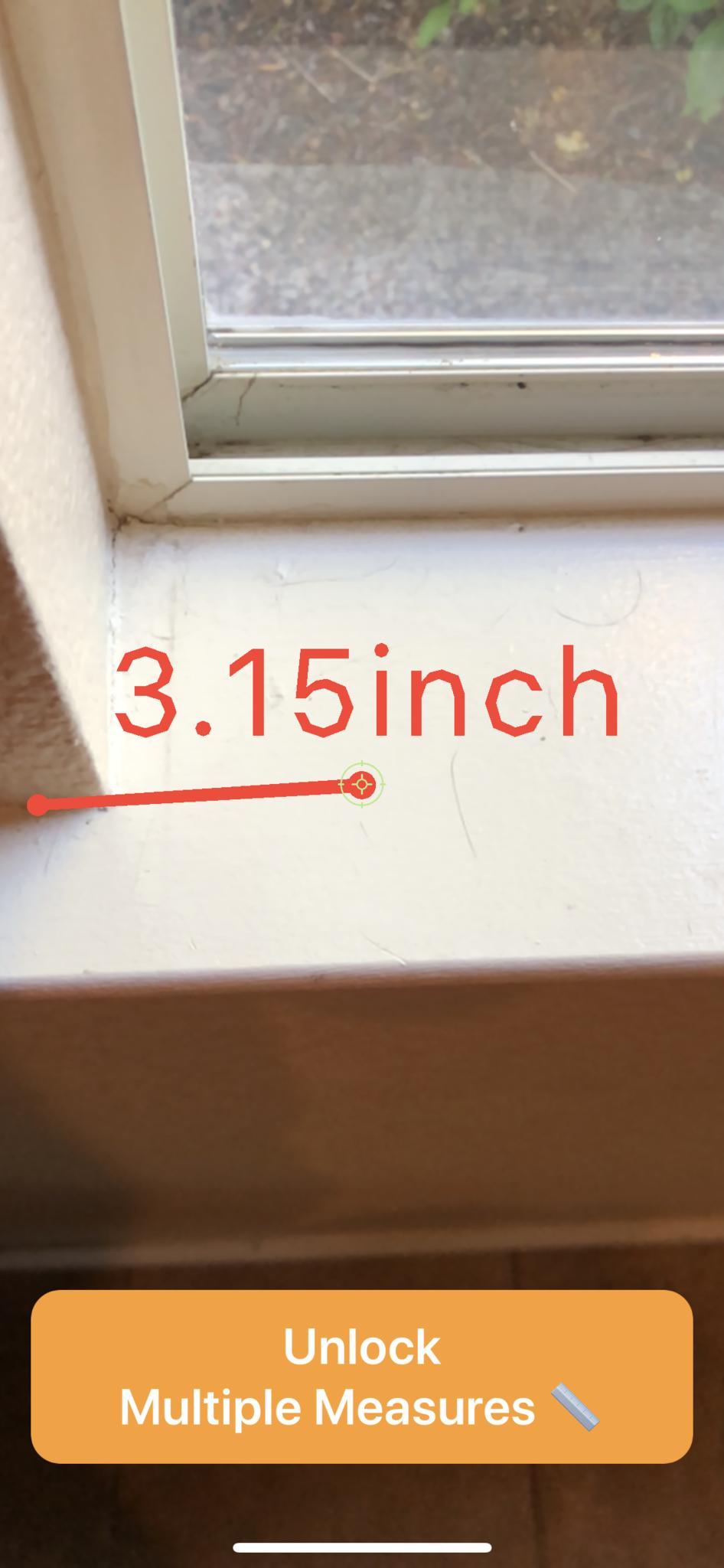
This app—not made by Apple—lets you do one measurement each time you launch it; to perform multiple measurements without relaunching you need to make a $1.99 in-app purchase. The app can only measure basic length and has very few options. In addition, the focus area doubles as the button to use to set starting and ending points, making it harder to use.
How they measure up (#sorrynotsorry)
And now for the numbers from each of the apps, as well as the actual measurements, taken with a physical, metal tape measure:
| Header Cell - Column 0 | Width | Height |
|---|---|---|
| AirMeasure | 70.5 | 58.375 |
| AR MeasureKit | 68 | 58 |
| Tape Measure | 72 | 57 |
| Measured | 71.65 | 55.80 |
| AR Measure (Markers) | 70.9 | 58.4 |
| AR Measure (Targets) | 70.0 | 56.8 |
| Measure | 68.25 | 52.52 |
| Measure (Apple) | 69.0 | 55.0 |
| Actual | 70.75 | 59 |
Overall, AirMeasure came the closest to the actual dimensions of the window.
Your Mileage Will Vary
During its WWDC demo, Apple specifically stated that measurements derived from its Measure app were "approximate"; interestingly, none of the apps I looked at provided the same disclaimer.
All of these apps will give you a pretty good approximation of what they are measuring. Accuracy goes up if the interface is easier to use and you have steady hands. And they all will perform better the closer the camera is to the object being measured.
If you're measuring room size, furniture, or backyard areas, these new AR measuring tools are pretty good. It's early days for this technology; it's bound to improve.
But if you need absolute accuracy, stick to a physical tape measure. For now.
Measure for Measure
Have you tried an app we didn't try? Let us know about your experiences in the comments below.
Updated September 2018: Added Measure for iOS 12.
Mike Matthews is a writer at iMore.com. He has used Apple products all the way back to the Apple II+. He appreciates no longer having to launch apps by loading them from a cassette tape recorder.


